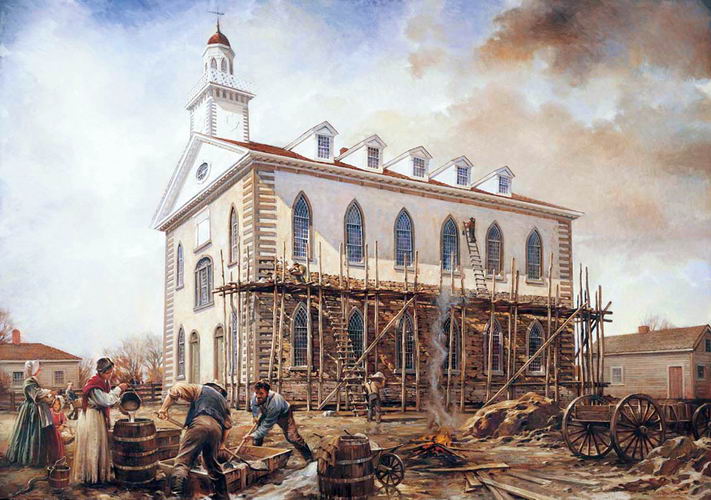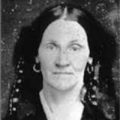Question
Gramps,
Why did Joseph Smith have the offices of the Nauvoo Expositor ransacked and the printing press destroyed and thrown into the middle of the street?
Steve
Answer
Steve,
In order to understand the destruction of Nauvoo Expositor press and why things happened the way they did, you need to understand the context. You need to place yourself in that Nauvoo Council room with the Mayor and Aldermen. Fortunately, a certain Dallin H. Oaks (Professor of Law, University of Chicago; A.B., 1954 Brigham Young University; J.D., 1957 University of Chicago; Member of the Illinois State Bar) wrote about this event (largely to discuss the legality, but he also gives it context and investigates the claims of the Expositor and the Council) almost 50 years ago in Suppression of the Nauvoo Expositor. Subsequent quotes and summaries come from this source.
By the time Joseph Smith and the Saints had reached Nauvoo they had been kicked out of their homes multiple times, killed, assaulted, and harassed by methods both legal and illegal. When they took their case to the Government they were told in essence that it was not politically expedient to help them redress the wrongs committed against them. So in establishing Nauvoo, they asked for and received from the Illinois State Legislature a very powerful legal Charter. For instance, the power of habeas corpus provided Church leaders (or any citizen for that matter) extradited or jailed on specious charges could appeal to a local judge that the evidence was simply insufficient.
The Expositor printed its first and only edition describing three grievances against Church leadership generally, and against Joseph and Hyrum Smith specifically (the President and Assistant President of the Church): 1) The Church/city leaders mixed religion and politics together (Joseph Smith was Mayor, and he was running for President of the US with Sidney Rigdon (first counselor in the First Presidency) as his running mate); 2) New doctrines and practices introduced in the Church, including polygamy and the recent sermon in the grove; and 3) the city leaders abused governmental powers past their bounds, specifically with the writ of habeas corpus.
Oaks evaluates the validity of the first and third claims, and apologists have considered the points in the second claim. What is telling is that the Nauvoo City Council did not discuss these claims, and they deliberated quite some time on the matter. “On Saturday, June 8, 1844, the day following issuance of the Expositor, the Nauvoo City Council met for a total of six and a half hours in two sessions. The Council then adjourned until Monday, June 10, when it met for an additional seven and a half hours.” The Council’s concern was two-fold: 1) the inflammatory nature of the paper would cause Nauvoo citizens to form a mob and create a riot; and 2) the inflammatory nature of the paper would cause the neighbors to increase persecutions on the citizens of Nauvoo. From the minutes of that meeting:
“Councilor Phineas Richards said that he had not forgotten the transaction at Haun’s Mill [where 30 Mormon men and boys were shot down in cold blood by a Missouri mob: 17 dead and 13 wounded], and that he recollected that his son George Spencer then lay in the well [where the dead had been buried hurriedly by the survivors] . . . without a winding-sheet, shroud or coffin. He said he could not sit still when he saw the same spirit raging in this place. He considered the publication of the Expositor as much murderous at heart as David was before the death of Uriah; was prepared to take stand; by the Mayor, and whatever he proposes; would stand by him to the last. The quicker it is stopped the better.”
So the Council deliberated on what action they could take. The Nauvoo Charter allowed the Council to declare “public nuisances” (this particular section was boiler-plate really and quite common) and Blackstone’s Commentaries was the canonical source for legally understanding the ins and outs. The Council read over both and finally declared the Expositor a public nuisance and authorized the City Marshall to destroy the papers and the press.
Here let me pause and address some thoughts that you may be having at this point. If the Council was concerned that a mob would form and destroy the press, why did they decide to achieve the same outcome under a legal aegis? Why not protect the press instead? The simple answer is that when mobs form, things quickly get out of hand. Tempers escalate, pride get hurt, and the next thing you know uncontrolled violence ensues. By sending the Marshall to destroy the press, the Council was seeing to it that the nuisance was handled without a riot (more on riots later).
What about the First Amendment’s protection of the press? Well that’s what’s so interesting. Back in 1844, before the passing of the 14th Amendment (asserting that states must grant the same liberties outlined in the Constitution), the idea was long held that “freedom of the press” meant the author was solely but fully liable for the contents. The right to print was not separated from the responsibility on the writer not to “shout ‘fire’ in a crowded theater”, if you will. It was not until 1931 (Near v. Minnesota) that the Supreme Court narrowly ruled for a freer interpretation. This fact is backed by the charges brought against Joseph Smith and company. They were not charged for abridging the freedom of the press – they were charged for a riot. That is, they were too heavy-handed in destroying the press.
Joseph Smith never got his day in court over this matter. He surrendered to the law and he was martyred while in prison. In retrospect, this very fact confirms the fears held by the Council and validates their decision to declare the paper a nuisance. Oaks concludes that “the common assumption of historians that the action taken by the City Council to suppress the paper as a nuisance was entirely illegal is not well founded. Aside from damages for unnecessary destruction of the press, for which the Nauvoo authorities were unquestionably liable, the remaining actions of the council, including its interpretation of the constitutional guarantee of a free press, can be supported by reference to the law of their day.” The Council could have been sued for the price of the press (not the Expositor issues) because Blackstone and the case law around that time established that only the nuisance could be destroyed, not those things being used to produce the nuisance. “There was no legal justification in 1844 for the destruction of the Expositor press as a nuisance. Its libelous, provocative, and perhaps obscene output may well have been a public and a private nuisance, but the evil article was not the press itself but the way in which it was being used.”
But there was no such lawsuit, just the riot charge. And Joseph likely would have gotten off. For starters, even the prosecution’s witnesses testified to the restraint, that damage was only done to those items relating to the press. Additionally, “after Joseph’s death, some of the defendants [in the Council] were again tried for riot [the same charge Joseph faced], this time before a jury in the circuit court. All were acquitted.”
Gramps







